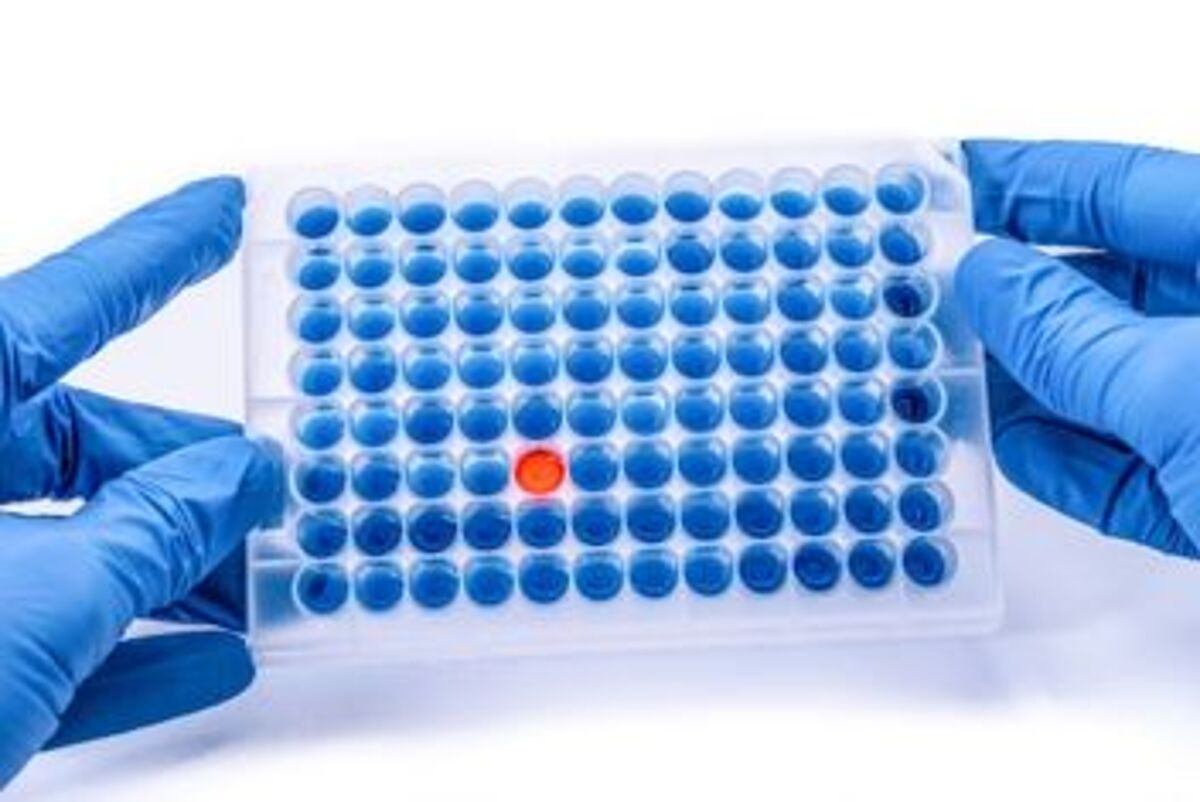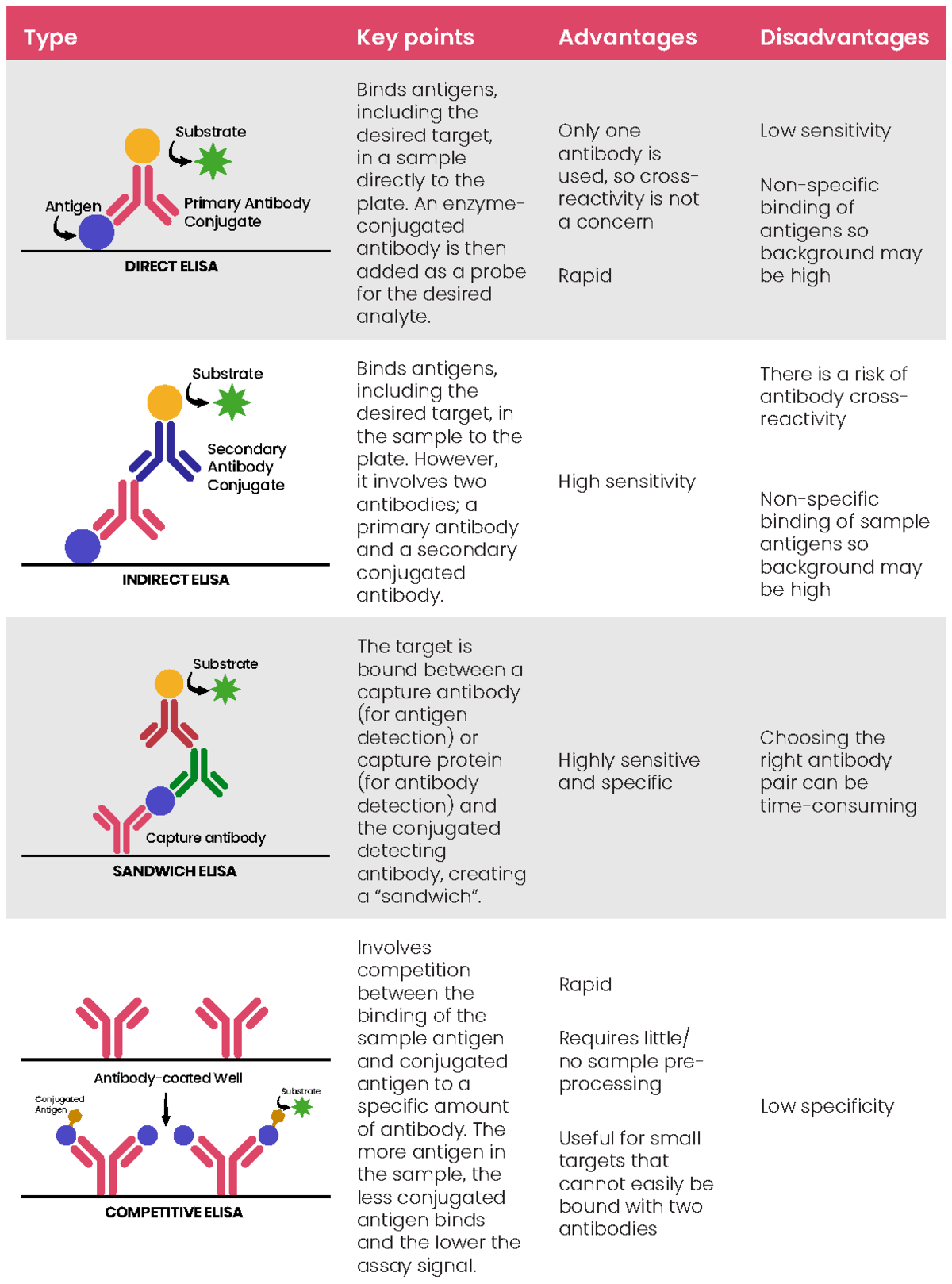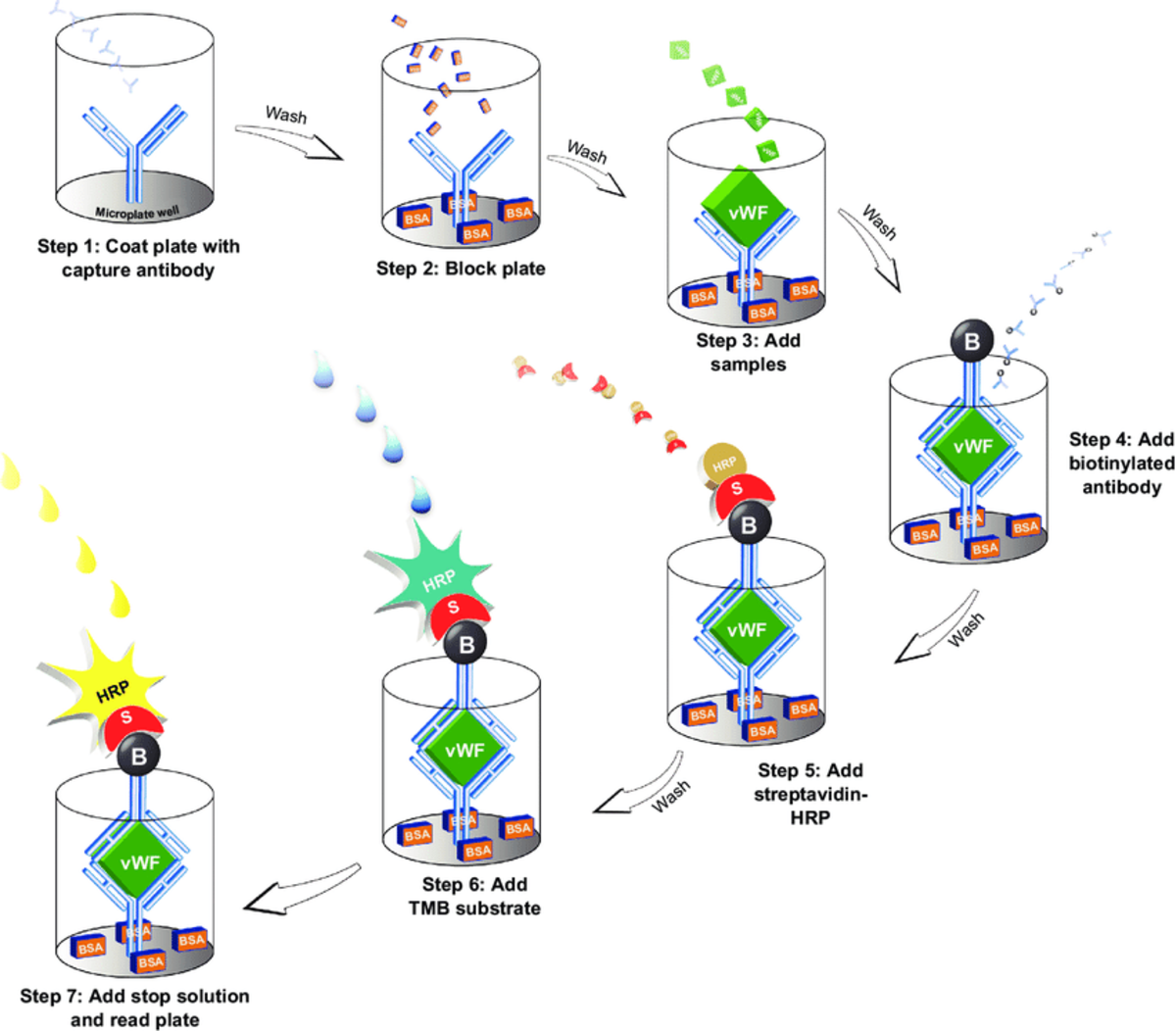Ready-to-use ELISA kits are often preferred to developing an ELISA in-house since they can offer faster time to results, more consistent performance, and uninterrupted long-term supply. When selecting an ELISA kit for your analyte of interest, it is important to consider factors such as the assay format, the chosen sample material, and the type of readout produced.
What is an ELISA and what are its advantages?
Enzyme-linked immunosorbent assay (ELISA) is a microplate-based technique for detecting specific analytes such as antibodies, antigens, or other proteins in solution. It involves capturing the target of interest on the surface of the microplate wells before using enzyme-labeled antibodies to confirm analyte binding. A major advantage of ELISA is its sensitivity, which can reach pg/mL levels in complex sample types such as cell culture supernatant, serum, or other biological fluids. ELISA is also relatively easy to use, can be combined with automation to increase throughput, and, unlike most other immunoassays, can provide quantitative results.
What are the main ELISA formats?
Four main types of ELISA are available to researchers. In a direct ELISA, the target analyte becomes bound to the microplate surface before being detected with an enzyme-labeled primary antibody. An indirect ELISA is similar, but uses both an unlabeled primary antibody and a labeled secondary antibody for detection, which provides signal amplification. During a sandwich ELISA, the microplate wells are coated with an analyte-specific antibody, then a second analyte-specific antibody (which recognizes a different epitope) is used to detect the bound target. All of these assay formats can be converted to a competitive ELISA, in which the analyte of interest competes with a labeled reference for microplate binding; the more analyte that is present in the sample, the lower the signal.
Which ELISA format should you choose?
Selecting between the different ELISA formats should be driven by the purpose of your research. If the intention is to characterize antibody binding, such as during allergy testing or the assessment of antibody cross-reactivities, direct ELISA is often a good choice. Determining the total antibody concentration in a sample may instead be better suited to indirect ELISA. Sandwich ELISA is the most popular ELISA format due to its superior specificity and sensitivity, although it is important to remember that the accuracy of sandwich ELISA depends on using matched antibody pairs. In general, competitive ELISA is reserved for studying small antigens bearing just a single epitope since it is the most challenging ELISA format to develop.
What does a typical sandwich ELISA involve?
A typical sandwich ELISA begins with plate coating, whereby the capture antibody is diluted in a specialized coating buffer - usually 0.2M carbonate/bicarbonate at pH >9 - and added to the microplate wells. The coating buffer serves to stabilize the antibody, as well as maximize its adsorption to the microplate, and must be protein-free.
Following incubation, the wells are washed several times - usually with Tris-buffered saline (TBS) or phosphate-buffered saline (PBS) containing 0.05% v/v Tween-20 - to remove any unbound antibody, then a blocking solution is applied to prevent non-specific binding events. Common blocking solutions include bovine serum albumin (BSA) and normal serum.
Next, the samples are introduced into the wells, alongside any controls or reference standards. After incubation and further washing, the detection antibody is added. This is typically an antibody labeled with horseradish peroxidase (HRP), alkaline phosphatase (AP), or biotin, of which the latter necessitates a separate incubation step with a streptavidin-enzyme conjugate for detection purposes.
Finally, an appropriate enzyme substrate is added to produce a measurable readout. Common substrates include 3,3′,5,5′-Tetramethylbenzidine (TMB) for HRP-based detection, and p-Nitrophenyl Phosphate (pNPP) for AP-based detection, both of which are converted to soluble colored products that can be measured using a standard benchtop spectrophotometer.
Alternatively, a chemiluminescent substrate can be used to provide higher sensitivity, although this requires access to a dedicated reader. In recent years, ELISA has been configured to use antibodies conjugated to fluorophores, oligonucleotides, and other detection moieties, although these approaches cannot be strictly classified as enzyme-linked.
What are the advantages of using an off-the-shelf ELISA kit?
Although it is possible to develop an ELISA in-house, doing so is a laborious process. Not only must researchers identify suitable antibodies (including matched antibody pairs) and validate them for use with their chosen model system, but they must also carefully optimize each step of the workflow to ensure data are accurate and reproducible. In contrast, purchasing an off-the-shelf kit means that all potential variables will already have been addressed, which can equate to considerable savings in terms of time and money. Additional benefits of commercial ELISA kits are that they will have undergone rigorous quality control prior to release, and are available in scalable supply.
What are some key factors to consider for ELISA kit selection?
With so many off-the-shelf ELISA kits to choose from, it can be difficult to know where to start when it comes to product selection.
Factors to consider include checking that the kit has been validated for your chosen sample type, as well as confirming that the expected analyte concentration of your sample material falls within the kit’s dynamic range. It is also important to look for information about known cross-reactivities since this will help to avoid misleading results.
Commercial products should come with a detailed protocol, covering the preparation of samples, controls, reference standards, and buffers, and should always be supplied with a batch-specific certificate of analysis verifying assay performance.
For additional confidence in ELISA results, you may wish to select a kit that has been cited in the literature or that regularly features among the vendor’s best-sellers. For further guidance, speak with technical support teams for assistance with identifying a product that best meets your needs.
LubioScience represents some of the most trusted brands in research and works closely with partners including Bethyl/Fortis Life Sciences, Proteintech, Biorbyt, Abbexa, and CUSABIO to offer an extensive array of ELISA kits.
Contact us today to discuss how we can support your project.
Suppliers
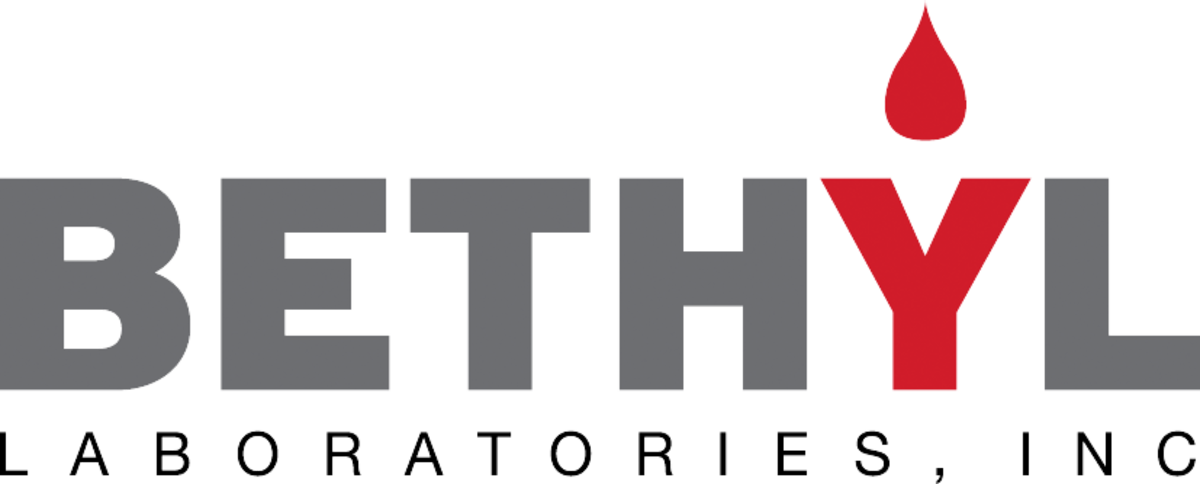
Bethyl Laboratories
Primary and secondary antibodies, epitope tag antibodies, serum protein antibodies, purified immunoglobulins, ELISA kits and reference pig serum
About Bethyl Laboratories Shop for Bethyl Laboratories products
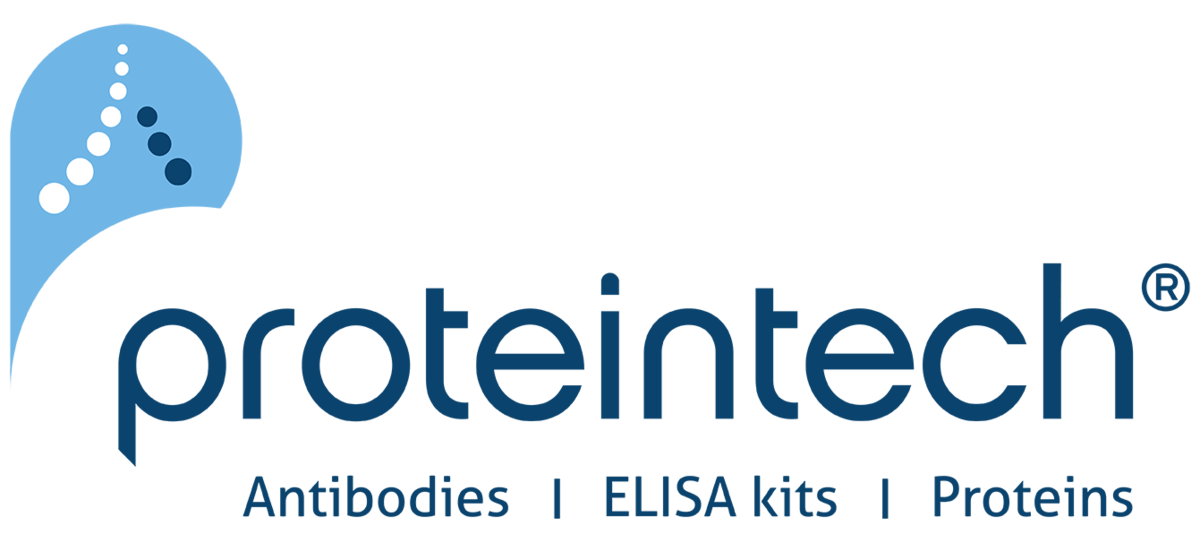
Proteintech
Primary antibodies, nanobodies, cytokines & growth factors - all made in-house. Strict validation by western blot, ELISA and siRNA testing.
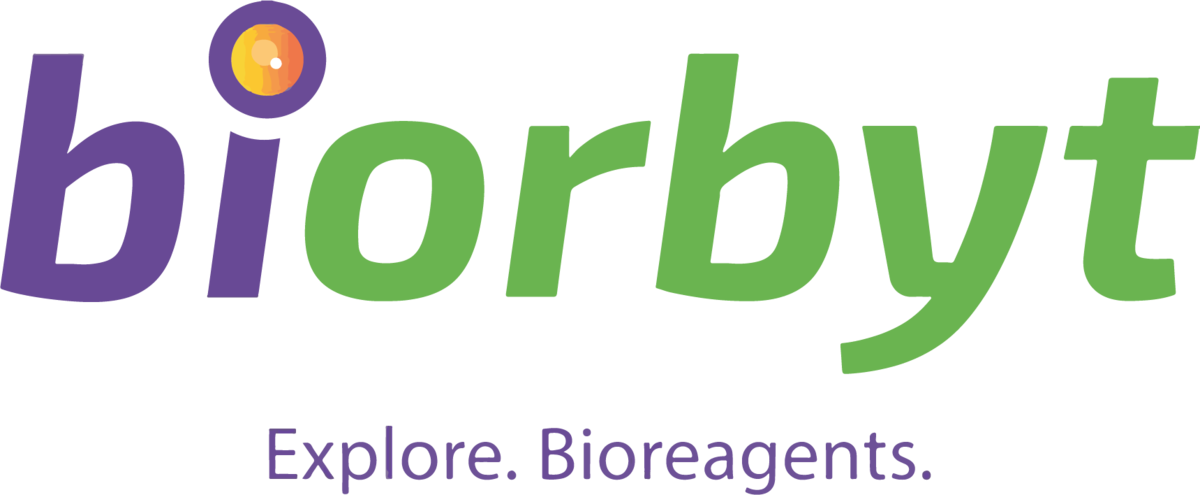
Biorbyt
Biorbyt offers a wide range of reagents to meet your needs, from antibodies and ELISA kits to biochemicals.

CUSABIO
CUSABIO offers antibodies, recombinant proteins, cytokines, cDNA clones and ELISA kits.

Abbexa
Abbexa is a UK-based supplier of biological tools incl. primary antibodies, secondary antibodies, proteins, ELISA and CLIA kits, and more.
References
Smith, Brendon & Strakova, Jana & King, Jennifer & Erdman Jr, John & Jr, William. (2010). Validated Sandwich ELISA for the Quantification of von Willebrand Factor in Rabbit Plasma. Biomarker Insights. 5. 10.4137/BMI.S6051.

